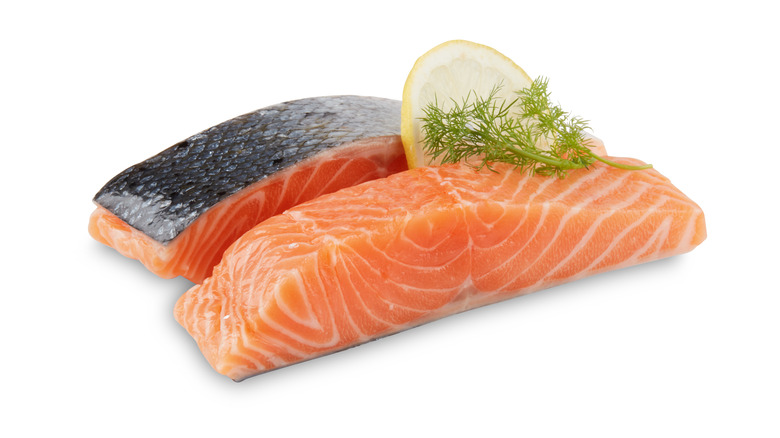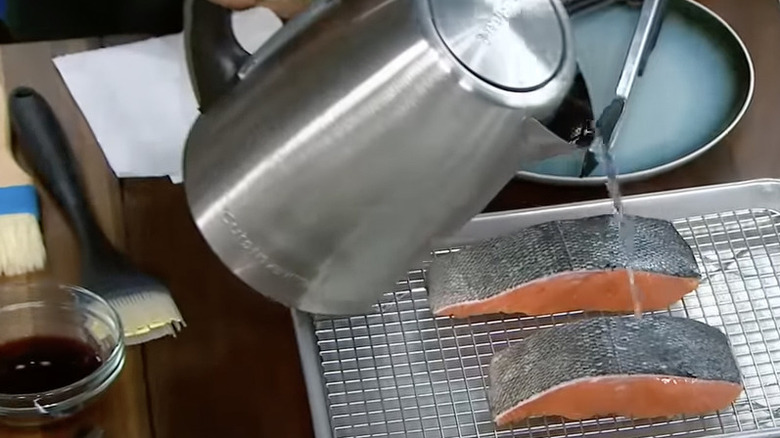The Boiling Water Hack That Makes Skinning Salmon A Breeze
To skin or not to skin, that is the question when it comes to salmon. Many seafood connoisseurs love the extra "fishy" taste that comes from leaving the skin intact, while others say it overpowers the palette. Salmon is rarely deep-fried, meaning it's harder to get an extra crispy skin texture like in fried cod or fried chicken. Regardless of whether you're a skin-on or skin-off enthusiast, there's no question that salmon harbors a bounty of nutrition straight from the sea.
Salmon contains a host of essential vitamins and minerals, including niacin, phosphorus, and vitamins D and B, as well as protein and, notably, omega-3 fatty acids for bolstering heart health, per Healthline. The outlet also points out that a high percentage of the omega-3 in salmon comes from the skin and helps retain valuable nutrients in the fish during the cooking process.
However, the skin can also harbor harmful chemicals and toxins such as polychlorinated biphenyls (PCBs) and methylmercury from polluted water, as well as pesticides from farm-raised fishing practices. So it's best to eat the skin from wild-caught salmon and to avoid it entirely during pregnancy. Thankfully, if you're looking to remove the skin from that delicious, nutritious piece of salmon, there's a surprisingly simple method to slip it off before it hits your skillet, oven, or grill.
Skin off, please
It's possible to scrape off the skin after cooking, but it can be messy, unappealing, time-consuming, and has a tendency to mutilate your plate presentation. That leaves you with the chore of removing the skin prior to cooking. Luckily, Sunny Anderson, Food Network chef and co-host on "The Kitchen," has a skin-off tip involving two ordinary resources available in any home kitchen — water and heat. In a YouTube video, she demonstrates how boiled hot water is your best tool for removing uncooked salmon skin and it only takes a few minutes.
First, lay the pieces of cut salmon filets down, skin-up, preferably atop a mesh rack with a pan underneath. Fill an electric kettle with water and bring it to a boil. Then slowly pour the hot water over the salmon skins, allowing the water to run into the pan beneath. This keeps the salmon flesh from heating up and beginning to cook. The skin will quickly soften and start curling on the edges. All that's left now is to simply grab one end of the skin and pull it right off. The debate over fish skin, especially salmon, may rage on — but now you have an easy option for having things your own way.

